Stefan's photography
This page is hoplessly outdated and is going to change at some point. I wish I would say this will happen soon, but really I don't know when will I find the time to do it.
This page is hoplessly outdated and is going to change at some point. I wish I would say this will happen soon, but really I don't know when will I find the time to do it.
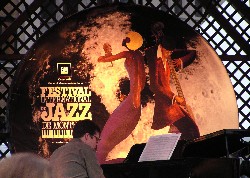
[Enlarge] |
There are always two people in every picture: the photographer and the viewer. —Ansel Adams
This page reflects my (utterly amateurish) passion for photography. You will notice here some of my photographs that I find interesting: some are good (if they are not it's not their fault but mine), some are funny, and some more attempt to tell a (personal) story. None of my albums here try to be an account of where I have been and what I have seen there, instead they are just random collections of interesting shots.
In all I hope you enjoy my photographs (or at least a part thereof). Should you feel like commenting on (praise, criticize) what you see here, I do welcome your emails.
Photographs are Copyright (c) Stefan D. Bruda; you are welcome to use them (some rights reserved) provided that you include proper credit, see the copyright notice. Enjoy!
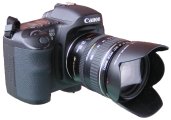
[Enlarge] |
Every time someone tells me how sharp my photos are, I assume that it isn't a very interesting photograph. If it were, they would have more to say. —Author Unknown
I have used throughout time various film cameras; one of the first was this Rolleicord I Model 1. In any event, no matter how I go about it I cannot remember what photograph had been shot with what film camera.
Digital photographs (the vast majority here) have this habbit to keep track of their cameras by themselves, so I know (by no fault of mine) what I used to shoot what. It is also considerably easier to keep track, as I owned throughout time only three digital cameras, two of them still in my possesion.
Many photographs herein have been shot with an Olympus C-730—a wonderful camera, with impressive zoom capabilities, more than decent resolutionm, and very versatile (from full manual to point-and-shoot and everything you can think of in between). I eventually managed to get a digital SLR, and I made it my primary camera, keeping the C-730 as a secondary camera for those times when carying bulky gear around is not desired or even impossible. After some time I found out that the purpose of the C-730 is much better served by a pocket camera, even if such a camera would not be as good—indeed, I realized that the C-730 is a good camera but not as good as an SLR, and is small but not as small as a pocket camera. I thus started to look into changing the C-730 with a less exciting but really small camera. What I ended up with is a camera that actually packs quite a punch, lacking full manual mode and 10x zoom (it only does 4x) but featuring optical image stabilization, a 6Mp sensor, and the size of a deck of playing cards.
In all, my primary camera is a Canon EOS 10D paired with a Canon EF 28-105 f/3.5-4.5 II USM, a Canon EF 50mm f/1.8 Mark I, a Sigma 70-300mm f/4-5.6 APO Macro II, and a Tokina AF 193 19-35mm f/3.5-4.5 (sure, some day I will get some "L" lenses—but I am not holding my breath). My secondary camera is a diminutive yet impressive Canon Powershot SD700 IS Digital ELPH (known in Europe as Canon Digital IXUS 800 IS, and in Japan as Canon IXY Digital 800 IS). Note in passing that I did try the products of other companies and then I became a Canon fan boy; I slowly formed my opinion that Canon puts together one of the best phorographic peformances with the most intuitive user interface.
I shoot my photographs in RAW mode on the EOS 10D (though I shoot JPEGs when memory card space becomes and issue) but I am restricted to JPEGs on the SD700 by the construction of the camera. The end result though is always a PNG. Here is the way I post-process my photographs. I do all the post-processing using free software (see the workflow for specifics) on my Core 2 Duo Macbook Pro running Gentoo Linux. To my deep shagrin Canon cameras are not mass storage devices (as opposed to the Olympus), but they are supported nicely by either gPhoto2 or libptp2.
Web publishing is done using Michael Sweet's flPhoto, with some in-house modifications. This Web page is produced using XEmacs.
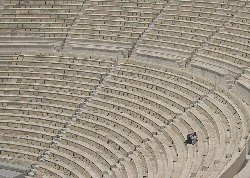
[Enlarge] |
If I knew how to take a good photograph, I'd do it every time. —Robert Doisneau
Each link below produces a page of thumbnails. Clicking on a
thumbnail (or on the associated description) gets you to a Web
quality version of the respective photo (the "view as slide show"
link gives access to the same, wait about seven seconds or click
to advance). If you further click on the image or its name you
will obtain the print quality variant of the same photo. Print
quality means a lossless 24-bit PNG (bandwidth warning: PNG
size hovers around 8MB!) produced from the post-processed original photograph. The
original photograph means a Canon RAW file most of the time, a
camera-produced maximum quality JPEG some times, and paper or film
a few times.
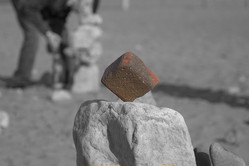
Things
Things I could not think of putting in any other place. Also various machinery, detail shots, a few boats

Empty spaces
Man-made places
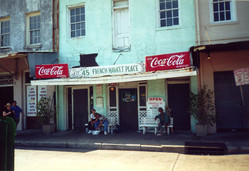
Nature
Landscapes and some miscellaneous nature. Distinct albums for the colours of the fall, trees, and flowers.
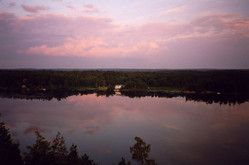

People
Here people are not just a passing thought (as is the case with most of my other shots).

Funny
Generally funny shots.
Copyright noticeThe photographs are Copyright (c) Stefan D. Bruda (bruda@cs.ubishops.ca) and are hereby licensed under the Creative Commons Attribution-Non Commercial-Share Alike 3.0 license. I generally have no problem with commercial uses of my photographs but I ask that you contact me first and obtain explicit permission. |

[Enlarge] |